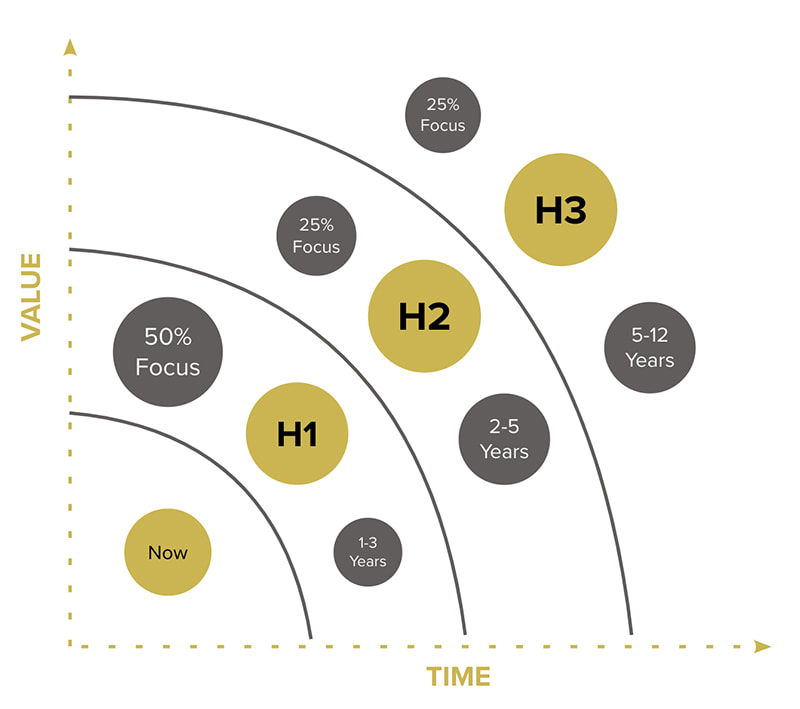|
THE 7 TYPES OF INNOVATION
ISO TC 279 defines innovation as "a new or changed entity realizing or redistributing value." At Illustrious, we define innovation as the act of creativity and experimentation that turns your best ideas (and even your best failures) into value. This means that whether we’re talking about corporate innovation or a small business that encourages innovation best practices on small teams, you can’t have innovation without the ability to 1) generate and elevate new ideas, 2) iterate ideas into process maps and prototypes, and 3) validate and scale those idea prototypes into the right audience fit. Innovation strategy falls into numerous categories. These include:
THE 3 HORIZONS OF INNOVATION An organization’s innovation strategy also falls into what McKinsey and Company call horizons. These are the time-bound areas of focus for innovation efforts. The first horizon (H1) is the home for any short-term innovation strategy and includes both “incremental” and “notable” shifts along the value scale. Incremental shifts include improvements or additional unique features to products and services (think a toothbrush with rubber grips or a flipchart with handles). According to Magnus Penker, author of How to Assess and Measure Business Innovation, “notable” shifts include a “distinguishable advance in design, process or business model” (think the RAZR phone or disposable hearing aids). The second horizon (H2) includes mid- to long-term innovation efforts and results in significant or “radical” shifts. This means there is an advance in the product or experience design as well as to the process or business model (think Southwest Airlines or iPod/iTunes). The third horizon (H3) is where we see game-changing transformational shifts. The hallmark of the third horizon is that at least two important advances are made in a combination of design, process or business model. (Think market disruptors like the razor and blades model or the light bulb and electrical grid.) Each of these corporate innovation types requires a different leadership style (entrepreneurial, democratic/participatory, coaching/charismatic, etc.). Each type requires a decision to buy, build, partner or do “open” innovation (collaboration outside the walls of the business). With each leap, what got you there will not get you where you’re going. At each horizon, you will take on new or different team members, mindsets, language, business systems and management methods. When you commit to the practice of innovation, you are not only committing to changing your surroundings, but also to changing yourself. If you’re ready to have a conversation about the inner work required to lead innovation in your business, we’d love to help you shine.
0 Comments
Your comment will be posted after it is approved.
Leave a Reply. |
Details
ABOUT THE AuthorJoran Slane Oppelt is an international speaker, author and consultant with certifications in coaching, storytelling, design thinking and virtual facilitation. Archives
March 2024
Categories
All
|


 RSS Feed
RSS Feed